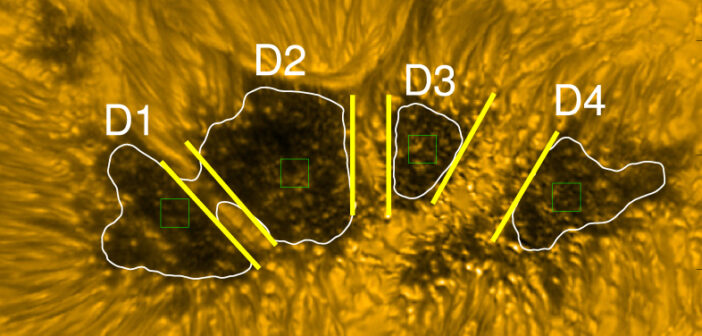Sunspots are dark, relatively cool regions of the Sun where magnetic flux pokes through the Sun’s surface. Sunspots have a two-toned appearance consisting of one or more dark regions, or umbrae (from Latin for “shade”), surrounded by a slightly lighter region called a penumbra. Over the past several decades, scientists have observed oscillations in sunspot umbrae with periods of 3 and 5 minutes. The causes of these oscillations aren’t yet known, though researchers generally agree that their source lies deeper in the Sun’s interior. To learn more about umbral oscillations, a team led by Wei Wu (Chinese Academy of Sciences and University of Chinese Academy of Sciences) analyzed images of sunspots, including the sunspot with four umbrae pictured above. Wu’s team found that the oscillations of umbrae within a shared penumbra are loosely correlated, suggesting that the waves travel horizontally from umbra to umbra, and stronger correlations might indicate a shared source. The team also analyzed observations of the chromosphere and corona above the sunspots and found that sunspot oscillations can, in some cases, travel upward through the Sun’s atmosphere. To learn more about the study of umbral oscillations, be sure to check out the full article linked below.
Citation
“Propagation Properties of Sunspots Umbral Oscillations in Horizontal and Vertical Directions,” Wei Wu et al 2023 ApJ 958 10. doi:10.3847/1538-4357/acf457

